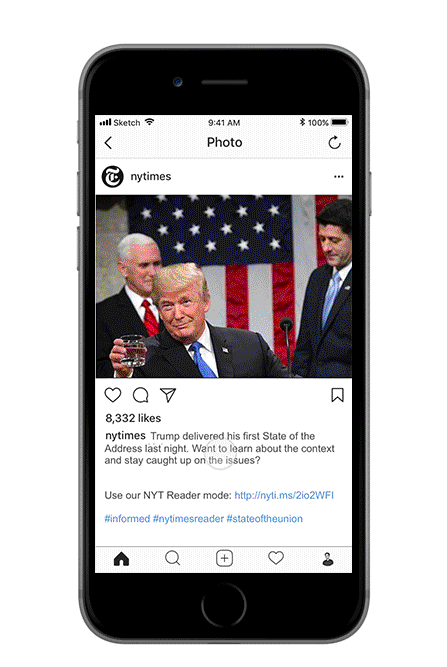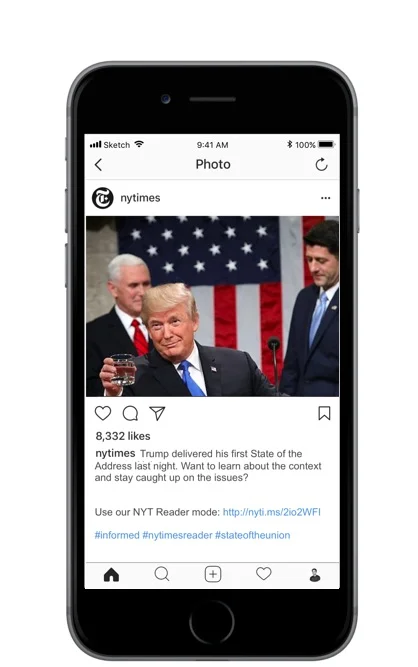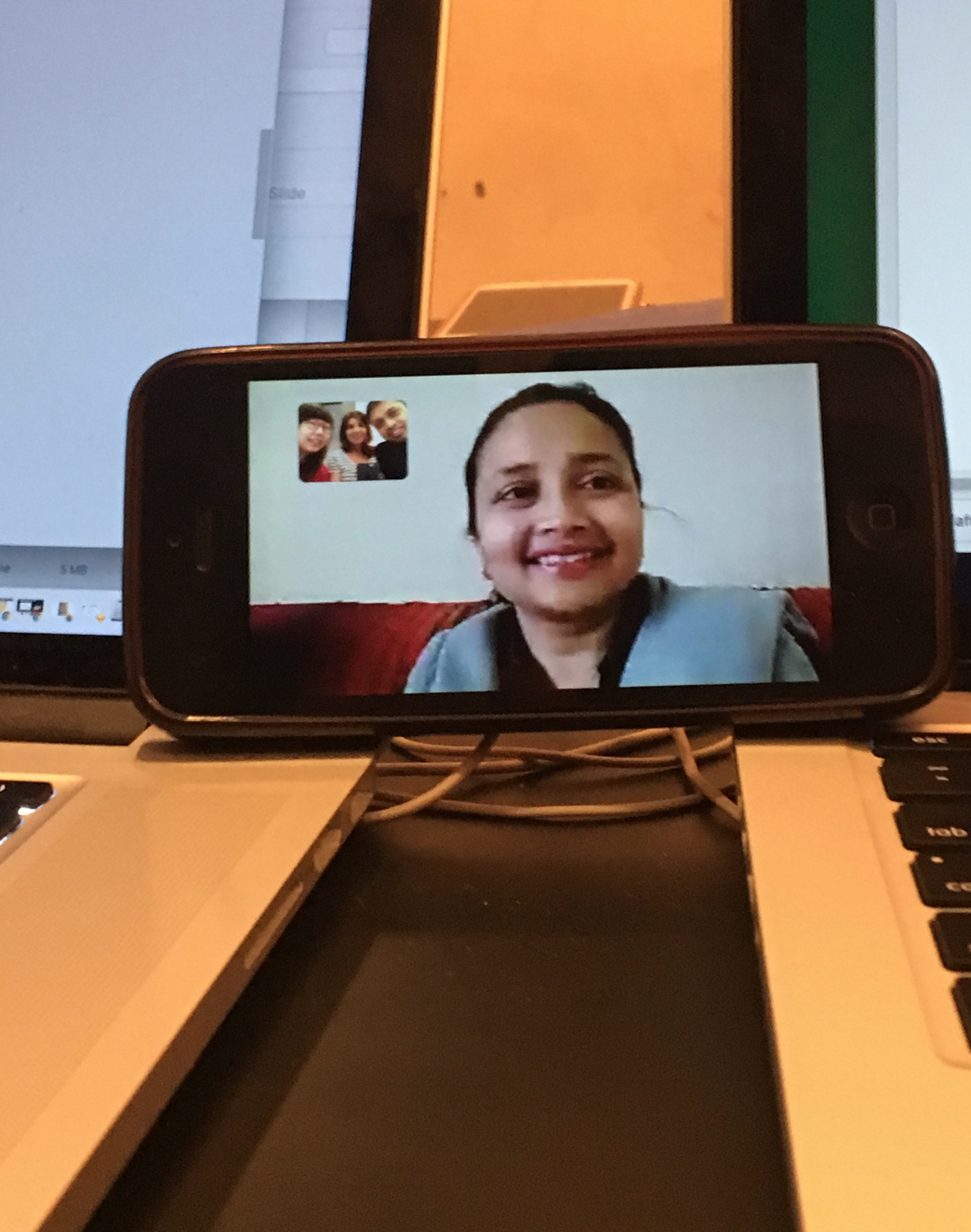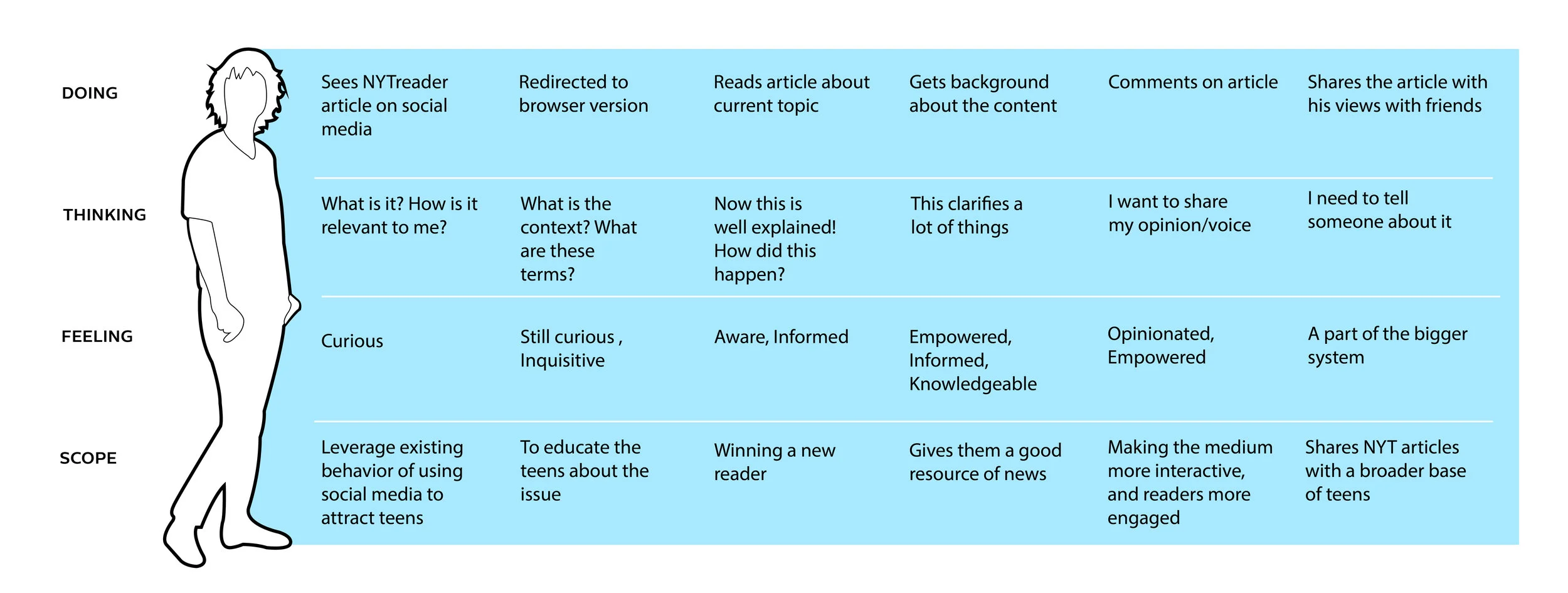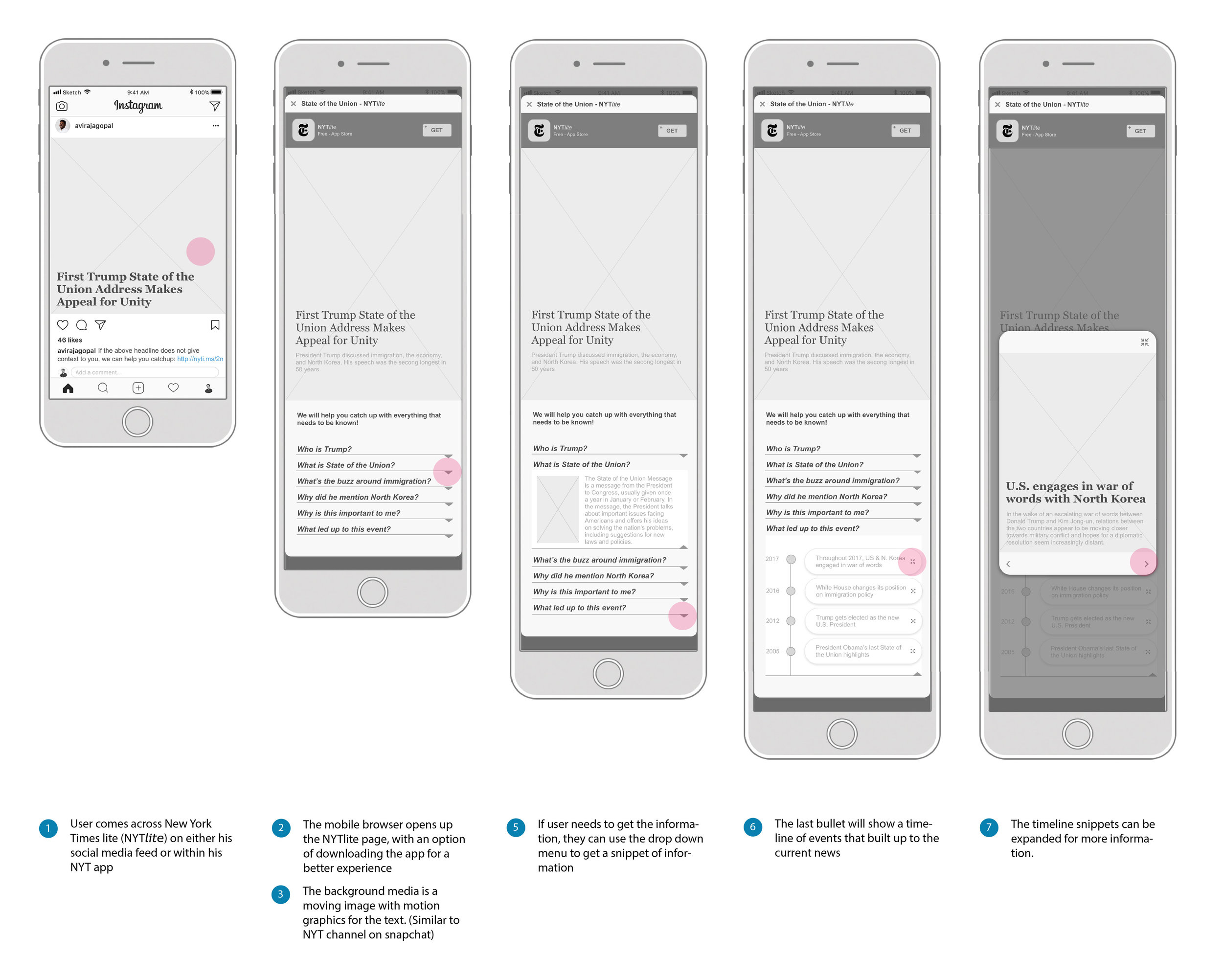New York Times: Political Reader for Teens
How might we help teens to get into the habit of reading the New York Times?
THE PROBLEM
The New York Times is an American news institution with worldwide influence. In the internet era where much of the news is free and the average age of a New York Times subscriber is steadily increasing, how can we grow the number of subscriptions to the NYTimes and make reading the New York Times a habit?
THE SOLUTION
We created the NYTimes Political Reader Mode, which helps to educate teens on political current events. When in this reader mode, teens can see supplementary information about current events which give them more context on the issues.
Scope: 3 Weeks
Categories: UX Research, UX Design, Prototyping
Role: Research, Idea generation, Prototyping
Collaborators: Abhinav Sircar and Glenda Capdeville
Advisor: Renda Morton (NYTimes)
THE SOLUTION
Background INFORMATION
When in the NYTimes Reader Mode, politics articles start off with a quick background on the issue to contextualize the teen. By expanding the sections, you can learn more about specific terms and events mentioned in the article.
THE TIMELINE
The Times has a rich repository of past articles. Linking relevant past articles that are relevant to the article help to contextualize the series of events
SOCIAL MEDIA ENTRY
Leveraging existing behaviors of teens, we thought to use social media, such as Instagram or Snapchat as an entry point for teens to enter the NYTimes Reader mode.
OUR DESIGN PROCESS
INTERVIEWS
We interviewed children, adolescents, young adults, and parents to understand current news reading habits at different stages of life. From these interviews, we discovered that there was a clear inflection point where adolescents started to become more curious about politics and current events. We also learned that the NYTimes was considered reputable but not accessible to most of our interviewees. We therefore saw this desire to understand politics as an opportunity for the Times to make their platform more accessible.
IDEATION
THE USER
Through our interviews, we noticed a pattern where teenagers started to become interested in politics and current events. Often, they tried to get more information from their parents and peers. Because we saw the need to learn about politics as a opportunity, we decided to focus on teenagers age 14-18.

